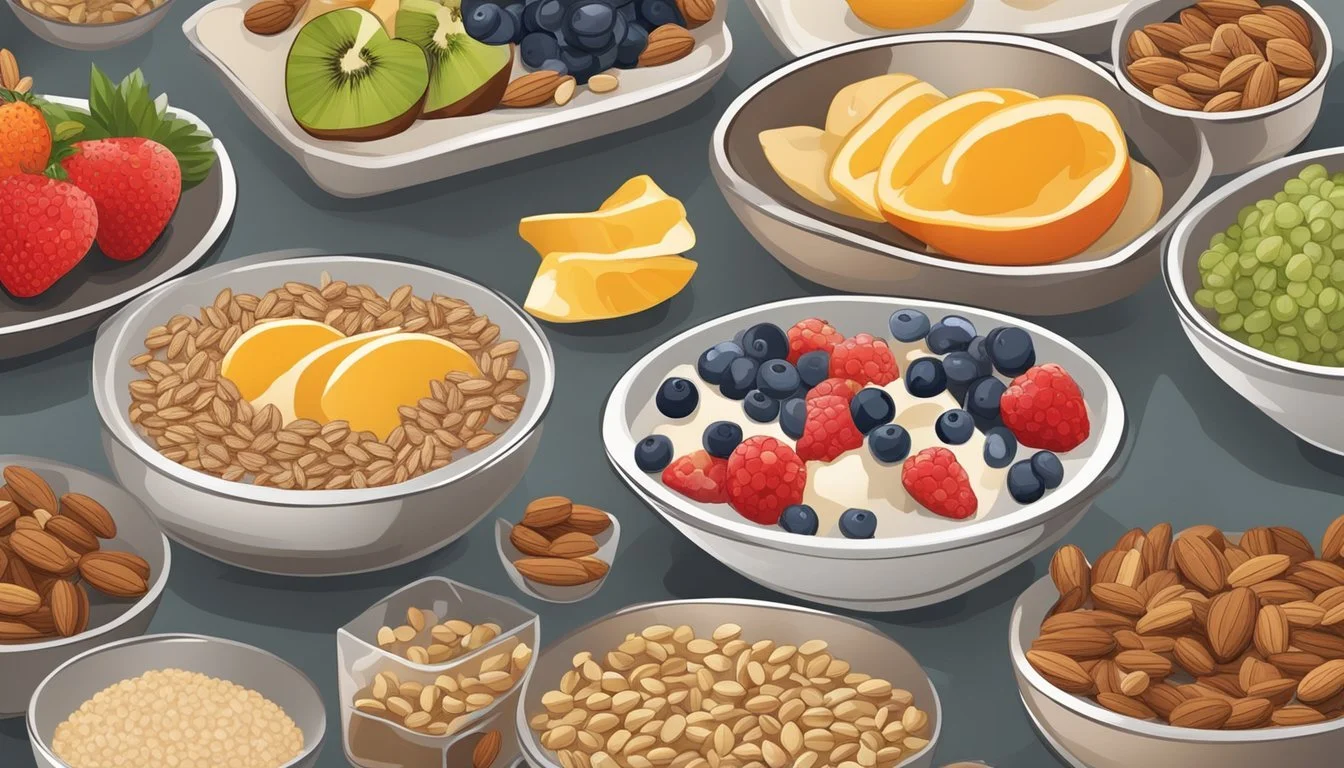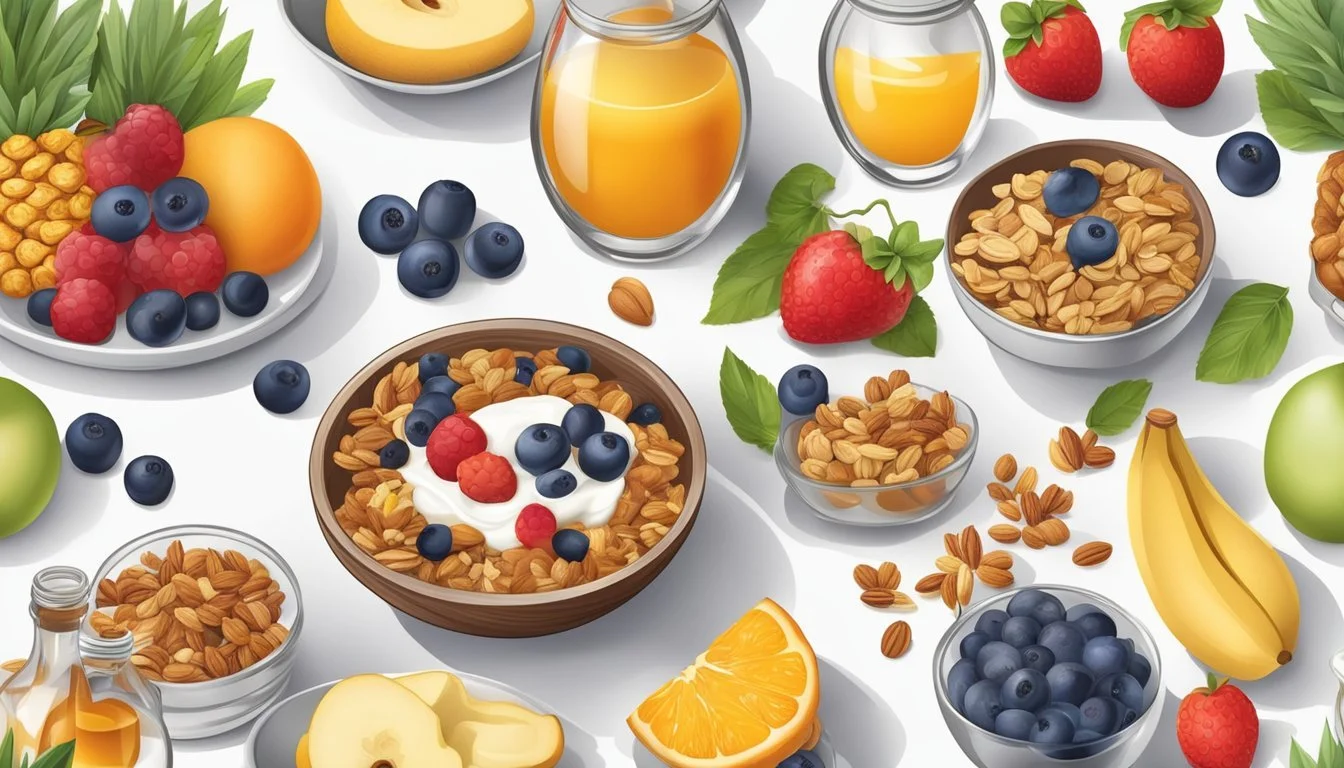How Long Do Breakfast Bowls Last?
Storage Tips and Shelf Life
When it comes to meal prepping, breakfast bowls are a convenient and nutritious option that can save you time and energy in the morning. They are packed with essential nutrients, including protein, fiber, and carbohydrates, making them an ideal choice for a healthy start to your day. But how long do these handy breakfast solutions last, and how can you ensure they're safe and delicious?
Breakfast bowls can generally be stored in the refrigerator for up to three days and in the freezer for 1-2 months. This means that whether you're making a Greek-style bowl with boiled eggs and veggies or a heartier option with turkey sausage and potatoes, you'll have plenty of time to enjoy your meals without worrying about spoilage.
Preparing breakfast bowls ahead not only helps maintain a balanced diet but also provides the flexibility to enjoy a hearty meal even on your busiest mornings. By incorporating a variety of ingredients, you can tailor each bowl to meet your nutritional needs and preferences.
Nutritional Value of Breakfast Bowls
Breakfast bowls can be a nutritious start to the day, providing a balanced mix of proteins, vitamins, and minerals. The health benefits vary depending on the ingredients used, such as eggs, vegetables, or meat, each contributing differently to the bowl’s overall nutritional profile.
Egg-Based Breakfast Bowls
Egg-based breakfast bowls are rich in protein and essential vitamins. One large egg contains about 6 grams of protein and 70 calories. Eggs are also a good source of vitamin A, iron, and cholesterol.
Proteins help in muscle repair and growth. Paired with vegetables, these bowls can include additional fiber and vitamin C, enhancing the nutritional value. Choosing low-fat cooking methods, like boiling or poaching, helps control the saturated fat content, making the bowl healthier.
Vegetable-Infused Breakfast Bowls
Vegetable-infused breakfast bowls are low in calories but high in vitamins and minerals. Vegetables like peppers, zucchini, and spinach add fiber, vitamin C, and potassium.
These provide essential nutrients that support overall health. Fiber aids in digestion and keeps you feeling full longer. Additionally, incorporating a variety of colorful vegetables ensures a wide range of nutrients, such as calcium and iron, crucial for bone health and oxygen transport in the body. Using a variety of fresh or lightly cooked veggies maximizes their nutrient content.
Breakfast Bowls with Meat
Meat-based breakfast bowls cater to those needing higher protein and fat content. Common meats used include breakfast sausage, turkey sausage, and bacon.
While these meats provide high protein, they also contribute significantly to the bowl’s calories, with sausage and bacon being higher in saturated fat and sodium. For example, a serving of breakfast sausage may contain around 250 calories and 20 grams of fat. Opting for leaner options like turkey sausage can reduce the fat content while still offering ample protein, necessary for muscle building and maintenance.
Balancing meat with vegetables and whole grains can help create a well-rounded, nutritious meal.
Preserving Breakfast Bowls
Preserving breakfast bowls ensures that meals prepared in advance remain fresh and delicious. This can be achieved through proper storage methods such as refrigerating or freezing.
Storing in the Fridge
Meal prep containers, particularly those made of glass, are ideal for storing breakfast bowls in the refrigerator. These containers seal tightly, preventing air from spoiling the contents. Breakfast bowls typically last up to 4-5 days in the fridge.
Ensure eggs, vegetables, and proteins like turkey sausage are fully cooked before storing to maintain their quality. Label each container with the date they were prepared to keep track of freshness.
Pro Tip: Avoid stacking the bowls too tightly to ensure even cooling in the refrigerator.
Freezing for Longevity
For longer storage, breakfast bowls can be frozen. Use freezer-safe containers to prevent freezer burn. Allow the meals to cool completely before freezing.
Individually portioned bowls simplify meal prep, as they can be reheated directly from frozen. Breakfast bowls stored in the freezer can last up to three months without a significant loss in taste or texture.
Preparation Tip: To reheat, transfer the meal from the freezer to the refrigerator the night before, or heat directly in the microwave using appropriate settings.
Reminder: Always label frozen meals with preparation dates and contents for easy identification.
Proper Heating Methods
Breakfast bowls, whether reheated in the microwave or warmed on the stove, need to be thoroughly heated to ensure even warmth and maintain their delicious texture and flavors. Following these methods will help you achieve optimal results.
Microwave Reheating
Using a microwave is the quickest method. Here are the steps:
If frozen, defrost on 50% power for 1-2 minutes.
Stir the contents to distribute heat evenly.
Continue to heat on full power in 30-second intervals, stirring between each, until heated through.
Add a splash of water or a drizzle of olive oil if the bowl appears dry. Ensure the bowl is microwave-safe and be cautious with metal components, such as foil. Using a damp paper towel over the top can help retain moisture.
Oven or Skillet Warming
For a more homogenous heat, an oven or skillet is ideal.
Oven Warming:
Preheat the oven to 350°F.
Transfer the breakfast bowl to an oven-safe dish.
Cover with foil to prevent drying out.
Heat for 15-20 minutes, checking halfway and stirring if necessary.
Skillet Warming:
Add a small amount of olive oil or cooking spray to a skillet.
Heat the skillet on medium.
Add the breakfast bowl contents in an even layer.
Stir occasionally to ensure even heating, usually for 5-10 minutes.
Both methods help retain the texture and prevent components like eggs and potatoes from becoming rubbery. Adjust times based on the quantity and initial temperature of the bowl to ensure everything is heated evenly.
Customizing Breakfast Bowls
Breakfast bowls offer a versatile and nutritious start to the day, allowing for easy adjustments to suit dietary preferences and nutritional needs. The following sections detail how to customize your breakfast bowls for optimal flavor and health benefits.
Dairy and Dairy-Free Options
For those who include dairy in their diet, shredded cheese, Greek yogurt, and a dollop of sour cream can enhance both flavor and texture. Cheddar, mozzarella, and feta are popular choices. Crumbled cheese types like feta or goat can add a creamy element.
For a dairy-free option, consider using vegan cheese, nutritional yeast, or dairy-free yogurt. These ingredients can offer similar textures and flavors without dairy. Avocado is a great addition for creaminess and adds healthy fats.
Add-Ins for Increased Nutrition
Incorporating healthy carbs like sweet potatoes, quinoa, or brown rice can provide sustained energy. Feel free to add a scoop of cooked spinach or kale for an iron and vitamin boost. Chickpeas or black beans supply additional protein and fiber.
Additional toppings like green onions, chopped tomatoes, and chopped cilantro can enhance both flavor and nutrition. For those looking to boost antioxidants, consider adding blueberries or pomegranate seeds.
Creating a Savory Bowl
For a savory breakfast, start with a base of cooked potatoes or hashbrowns. Turkey sausage, bacon, or a plant-based sausage are excellent protein choices. Mushrooms, onions, and peppers sautéed with salt and pepper can add depth to the bowl.
Use seasonings like cumin, paprika, or garlic powder to add flavor complexity. Adding a fried or poached egg on top provides a satisfying richness. For an extra kick, top with a bit of hot sauce or sriracha.
Health Considerations
Breakfast bowls can vary significantly in their nutritional content. When focusing on saturated and trans fats, sugar, and sodium, or catering to specific dietary needs like gluten-free and vegetarian varieties, it is essential to understand their impact on overall health.
Managing Saturated and Trans Fats
Saturated and trans fats are often linked to high cholesterol and heart disease. Breakfast bowls, especially those containing bacon or sausage, can be high in these fats.
For instance, the Jimmy Dean Bacon Breakfast Bowl contains 10 grams of saturated fat. To manage these fats, it is advisable to choose options with lean proteins and more veggies.
Polyunsaturated and monounsaturated fats are better choices. They help maintain heart health. Items like avocados, nuts, and seeds can replace fatty meats to make the bowl healthier. Reading labels and ingredient lists ensures you avoid harmful fats and make informed choices.
Reducing Sugar and Sodium
Pre-packaged breakfast bowls can contain high levels of sugar and sodium. High sodium intake is associated with hypertension, while excessive sugar can contribute to weight gain and diabetes.
A bowl listed with 910 milligrams of sodium indicates it is quite high. Alternatives include homemade bowls using fresh ingredients. Incorporating natural sugars from fruits and using spices instead of salt for flavor can significantly reduce unhealthy intake.
Monitoring portion size here is key. Products with hidden sugars also need scrutiny. Choosing bowls made with whole grains and veggies aids in reducing excess sugar and sodium intake.
Gluten-Free and Vegetarian Varieties
As more people adopt gluten-free and vegetarian diets, breakfast bowls that cater to these needs are vital. Gluten-free varieties should avoid wheat, barley, and rye. They can include gluten-free oats, quinoa, and other grains.
Vegetarian bowls might feature plant-based proteins such as tofu, legumes, or eggs combined with a mix of fresh vegetables. Meal Prep Breakfast Bowls Greek Style is one example, with boiled eggs and fresh veggies. Such options benefit those seeking to increase their intake of fiber and nutrients without relying on meat.
Choosing ingredients that align with dietary restrictions ensures these bowls are both satisfying and beneficial. Whether for health reasons or personal choice, it’s crucial to maintain nutritional balance.
Tips for Meal Prep Success
Efficient and successful meal prepping can significantly reduce your morning rush while ensuring a healthy start to the day. Key factors include well-organized ingredients, effective cooking techniques, and choosing the right containers.
Organizing Ingredients
Start by listing essential ingredients such as eggs, vegetables, proteins, and healthy carbs like sweet potatoes or quinoa. Organize your ingredients before you begin cooking to streamline the process.
Use separate bowls to pre-chop vegetables and measure spices. Group similar items together in the fridge to minimize prep time on cooking day.
Labeling your ingredients can also ensure that nothing is overlooked or forgotten, saving you valuable time.
Effective Cooking Techniques
Utilize tools like the air fryer for quick cooking of items like potatoes and bell peppers. Stirring the ingredients occasionally ensures even cooking. Mastering the speed of whisking eggs can improve the texture of scrambled eggs.
Use cast iron skillets for optimal heat distribution while cooking proteins and vegetables. Practicing these techniques can lower your total time in the kitchen while ensuring consistently good results.
Choosing the Right Containers
Invest in high-quality, meal prep containers that are durable and freezer-friendly. Glass containers are often preferred for their ability to retain heat and resist stains.
Choose containers with multiple compartments to keep ingredients like scrambled eggs and vegetables separate.
Label each container with the date to keep track of freshness, ensuring your make-ahead breakfast bowls last as long as possible.
Alternate Breakfast Options
Breakfast bowls are versatile and can be easily adapted into other delicious breakfast options, such as burritos or variations for different meal types. Below are detailed ideas for these alternatives.
Bowls vs. Burritos
Transitioning from breakfast bowls to burritos offers new flavors and textures. For instance, instead of a bowl of scrambled eggs, sausage, and potatoes, you can wrap these ingredients in a tortilla.
Ingredients selection:
Eggs: Scrambled with a dash of milk.
Sausage: Well-cooked and crumbled.
Potatoes: Diced or in hash brown form.
Peppers and onions: Sauteed for added flavor.
Cheese: A handful of shredded cheese like cheddar or pepper jack.
Wrap these in a flour tortilla, then sear the burrito for a crispy exterior. Optional additions include tortilla chips for extra crunch or a spoonful of salsa for added spice.
Adapting Bowls into Other Meals
Breakfast bowls can be transformed into lunch or dinner options with a few tweaks. Consider turning a breakfast bowl into a breakfast-for-dinner casserole.
Steps:
Ingredients prep: Pre-cook potatoes, sausage, and scramble eggs.
Layering: In a casserole dish, layer ingredients.
Addition of cheese: Top with a generous layer of your favorite cheese.
Bake: Cook at 350°F until cheese is bubbly and golden.
For a lighter meal, transform the bowl into a stuffed pepper by filling halved bell peppers with the bowl ingredients and baking. Adding fresh herbs such as cilantro can enhance the dish, making it both appetizing and nutritious.









